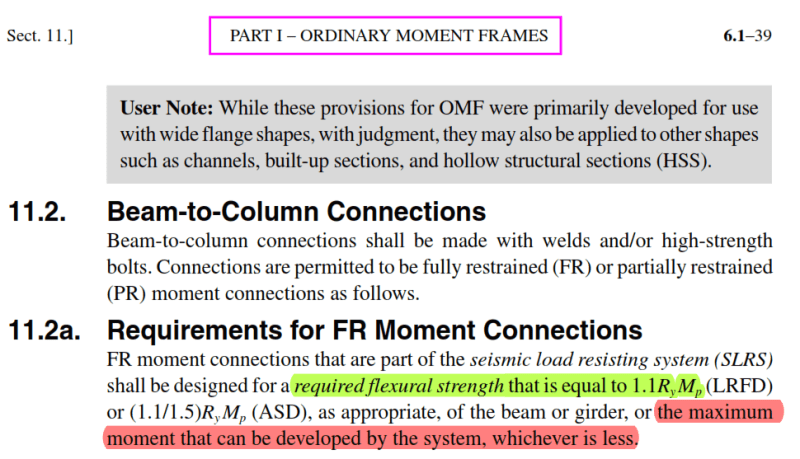NewbieInSE
Structural
- Dec 19, 2019
- 234
Please see the following figure.

What is meant by "the maximum moment that can be developed by the system"? What I understood first is, it means the max moment which can be obtained using the code suggested load combinations. But instantly the second thought which comes in mind is "how can the bending moment obtained from code-based load combos be ever higher than 1.1RyMp?".
I know that code-based loads will be lower, then why say "whichever is lower?"?
Please help me understand. Thanks.

What is meant by "the maximum moment that can be developed by the system"? What I understood first is, it means the max moment which can be obtained using the code suggested load combinations. But instantly the second thought which comes in mind is "how can the bending moment obtained from code-based load combos be ever higher than 1.1RyMp?".
I know that code-based loads will be lower, then why say "whichever is lower?"?
Please help me understand. Thanks.
